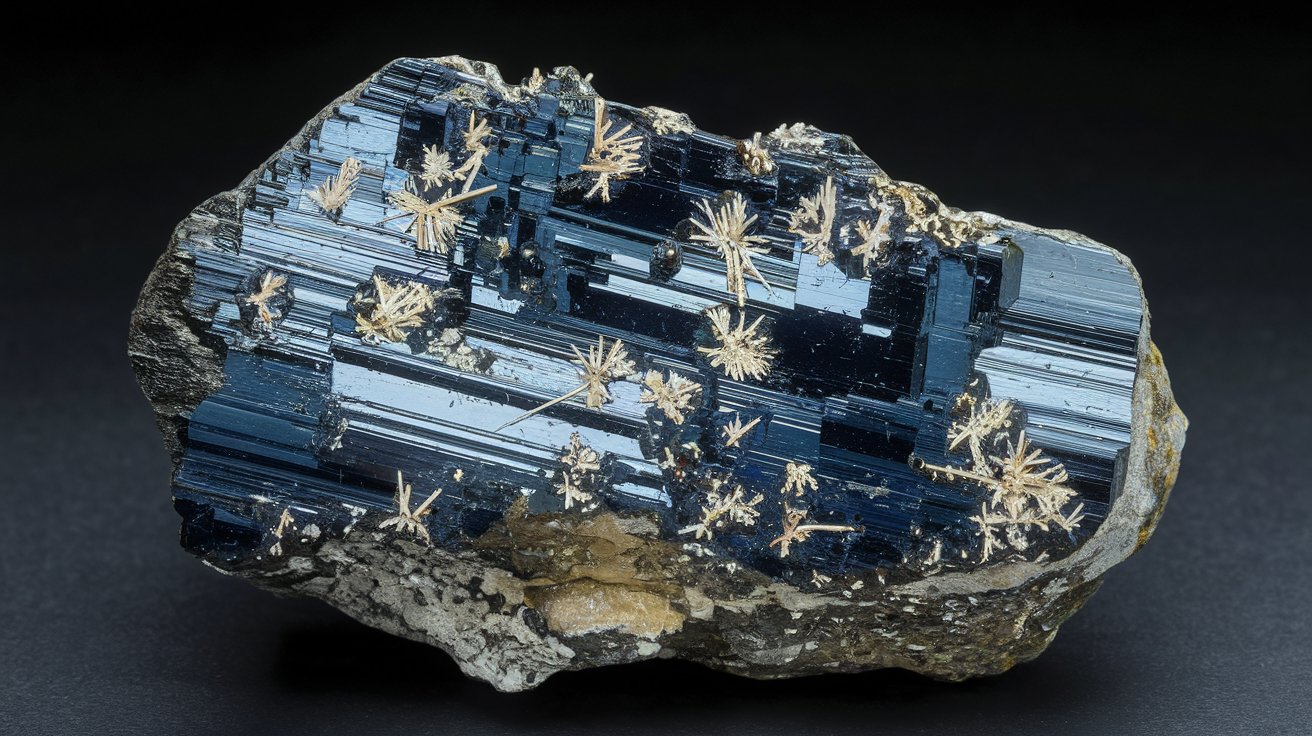
Routhierite is a rare mineral that intrigues geologists and collectors alike. Found primarily in hydrothermal veins, this mineral boasts a unique combination of copper, lead, and arsenic. What makes Routhierite special? Its striking reddish-brown to black color and metallic luster catch the eye, but there's more beneath the surface. Named after French geologist Pierre Routhier, this mineral forms in orthorhombic crystals, often appearing in small, granular clusters. Why should you care about Routhierite? Understanding its properties can offer insights into geological processes and mineral formation. Whether you're a budding geologist or a seasoned collector, Routhierite's rarity and distinct characteristics make it a fascinating subject worth exploring.
Key Takeaways:
- Routhierite is a rare mineral with a unique composition, found in Switzerland, Japan, and the Czech Republic. It's valuable for collectors and researchers due to its fascinating properties and association with other sulfosalts.
- Routhierite's physical and chemical properties make it a subject of study for mineralogists and toxicologists. Its rarity and presence in hydrothermal veins provide insights into geochemical processes and make it a valuable educational tool for museums.
What is Routhierite?
Routhierite is a rare mineral that captures the interest of geologists and mineral enthusiasts alike. Named after the French geologist Pierre Routhier, this mineral has a unique composition and fascinating properties.
- Routhierite is a sulfosalt mineral, meaning it contains sulfur combined with metals and semi-metals.
- It was first discovered in 1974 in the Lengenbach Quarry in Switzerland.
- The mineral is named in honor of Pierre Routhier, a renowned French geologist.
- Routhierite has a chemical formula of Tl(Cu,Ag)(Hg,Zn)2(As,Sb)2S6.
- It typically forms in hydrothermal veins, which are fractures in rocks filled with mineral-rich water.
Physical Properties of Routhierite
Routhierite's physical characteristics make it a subject of study for mineralogists. Its appearance and structure are quite distinctive.
- The mineral usually appears as small, reddish-brown to dark brown crystals.
- It has a metallic luster, giving it a shiny, reflective surface.
- Routhierite crystals are typically opaque, meaning light does not pass through them.
- It has a Mohs hardness of 3, making it relatively soft compared to other minerals.
- The crystal system of Routhierite is tetragonal, meaning it has a square base and four sides.
Chemical Composition and Structure
Understanding the chemical makeup of Routhierite helps scientists determine its formation and potential uses.
- Routhierite contains thallium, a rare and toxic metal.
- It also includes copper and silver, which are more common metals.
- The presence of mercury and zinc in Routhierite adds to its complexity.
- Arsenic and antimony are also part of its chemical structure.
- The mineral's unique combination of elements makes it a subject of interest for chemical analysis.
Occurrence and Locations
Routhierite is not found everywhere. Its rarity adds to its allure among collectors and researchers.
- Besides Switzerland, Routhierite has been found in Japan and the Czech Republic.
- The mineral is often associated with other sulfosalts like bournonite and tetrahedrite.
- It forms in low-temperature hydrothermal environments.
- Routhierite is typically found in small quantities, making large specimens rare.
- The Lengenbach Quarry remains one of the most significant sources of Routhierite.
Uses and Significance
While Routhierite is not widely used in industry, its properties and rarity make it valuable in other ways.
- The mineral is primarily of interest to collectors due to its rarity and unique properties.
- It is studied by mineralogists to understand the formation of sulfosalt minerals.
- Routhierite's composition provides insights into the geochemical processes of hydrothermal veins.
- The presence of thallium in Routhierite makes it a subject of study for toxicologists.
- Museums and educational institutions often display Routhierite specimens to educate the public about rare minerals.
Final Glimpse at Routhierite
Routhierite, a rare and fascinating mineral, holds a unique place in the world of geology. Its striking red-orange color, complex crystal structure, and intriguing chemical composition make it a subject of interest for both scientists and collectors. Found primarily in hydrothermal veins, this mineral often associates with other sulfides, adding to its allure. Despite its rarity, Routhierite provides valuable insights into the geological processes that shape our planet. Its discovery in various locations, including Japan and France, highlights the diverse environments where it forms. Whether you're a seasoned geologist or a curious enthusiast, Routhierite offers a glimpse into the intricate and beautiful world of minerals. Keep exploring and who knows, you might just stumble upon a piece of this remarkable mineral yourself.
Frequently Asked Questions
Was this page helpful?
Our commitment to delivering trustworthy and engaging content is at the heart of what we do. Each fact on our site is contributed by real users like you, bringing a wealth of diverse insights and information. To ensure the highest standards of accuracy and reliability, our dedicated editors meticulously review each submission. This process guarantees that the facts we share are not only fascinating but also credible. Trust in our commitment to quality and authenticity as you explore and learn with us.
